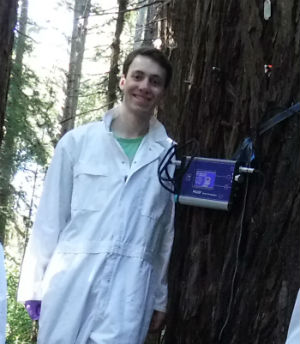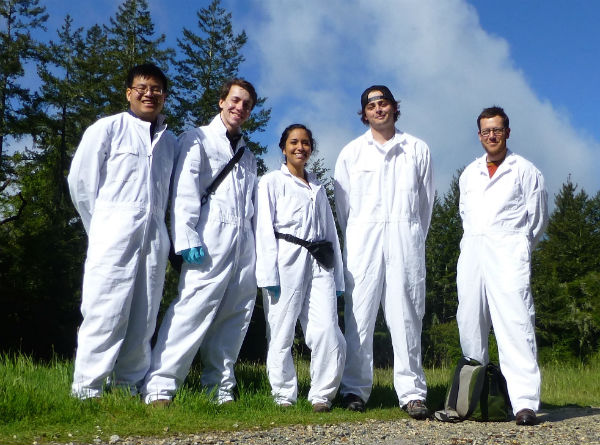Fourth year Ecology and Evolutionary Biology major Sam Castro has worked with the UCSC Campus Natural Reserve as a Forest Ecology Research Plot (UCSC FERP) intern, and as a volunteer since 2014 when he was a sophomore. Sam's experience is a great example of the way in which experiential learning in the Reserve can enhance an education. Sam has provided us with an account of his experience, which is shared below in his own words. It is our pleasure to share Sam's experience in the hope of inspiring current and future UCSC undergraduates to get involved, learning in the living laboratory right outside their classrooms!
UCSC Campus Natural Reserve Reflection
by Sam Castro
I am a fourth year Ecology and Evolutionary Biology major and this is my third year working on the Campus Reserve. I first heard about the Campus Natural Reserve internship program on a field trip my freshman year and right away I was hooked. Before I began working on the Reserve, nature had simply been a pleasant backdrop for recreation. It wasn't until I started working on the Reserve that I actually got a chance not only to study the diverse life forms surrounding me, but to get a deeper understanding of their role in their community.
I started out as an intern helping with the Forest Ecology Research Plot forest census. From day one I learned to identify new species as well as some simple but invaluable skills like how to enter data, measure tree size, and avoid getting poison oak. We were also encouraged to think. Throughout the next several quarters I helped out on everything I possibly could. I moved from the FERP woody-stem census to measuring and identifying native reptiles and amphibians with the ongoing herpetological study. I learned how to identify plant species by their fallen leaves, their seeds, and their flowers while volunteering with the phenology survey. I used a sonic tomograph to look for fungal rot deep within the trunks of redwoods. All my past work on the FERP and Campus Natural Reserve taught me how to plan and implement a study of my own. This year I have begun collecting data on fungi in the Forest Ecology Research Plot. I am hoping to associate fungal species with specific plant communities and individuals over time to better predict where and when they grow. In the long term, I hope this project will give insight into the way fungi respond to less frequent rainstorms and less abundant water.
I would highly encourage all UCSC students especially those in the Environmental Studies and Ecology and Evolutionary Biology departments to seek out an internship with the Campus Natural Reserve. Every internship will show you a little more of the beautiful forest surrounding our campus while simultaneously getting course credit and satisfying the PR general elective. Each project will teach you new skills that will set me apart from other graduates, they will introduce you to amazing people who are just as fascinated by the natural world as you are, and they will let you see that a career in environmental or biological field work is something you want. We are so fortunate to have a truly incredible amount of opportunities to experience field work on this campus.


